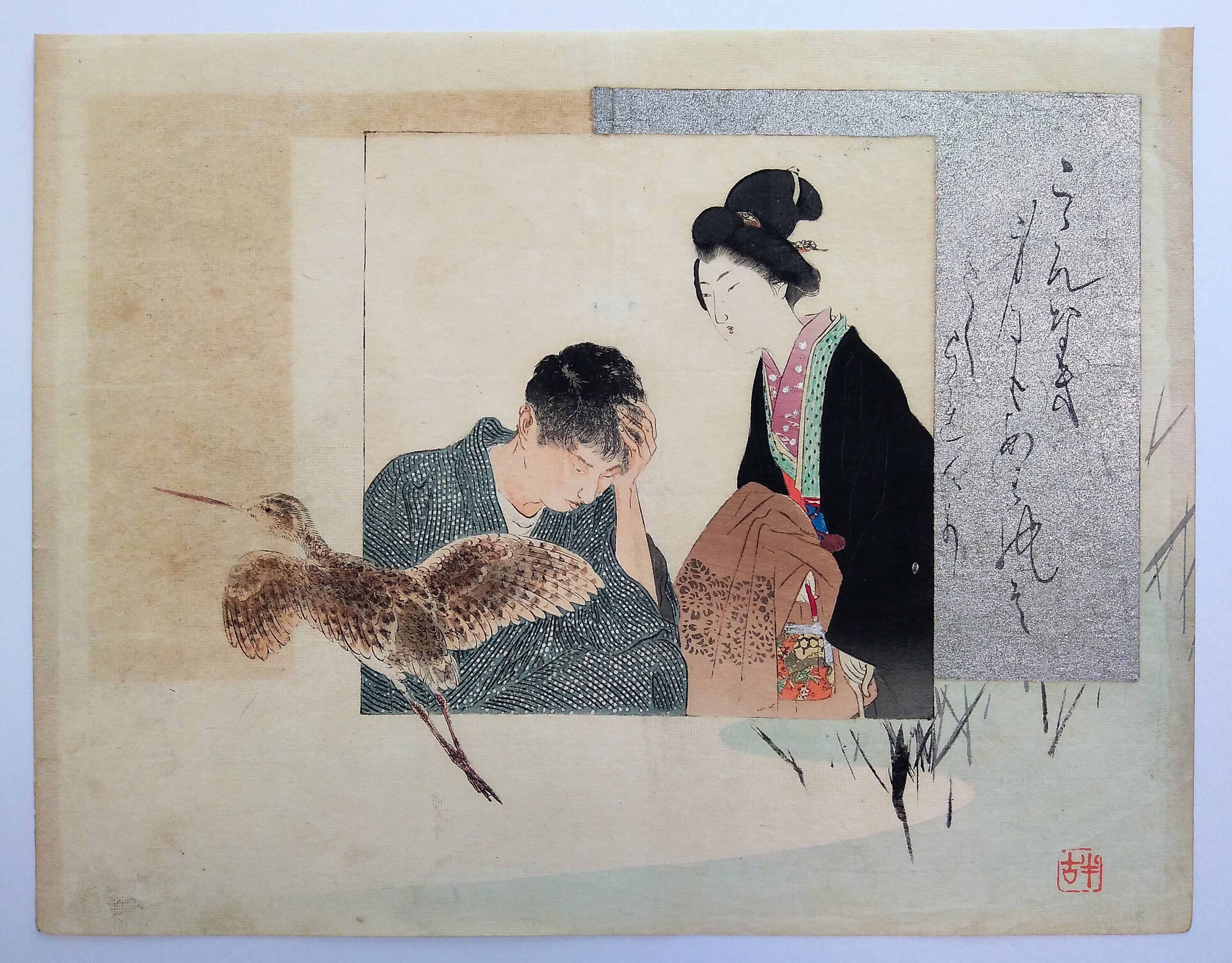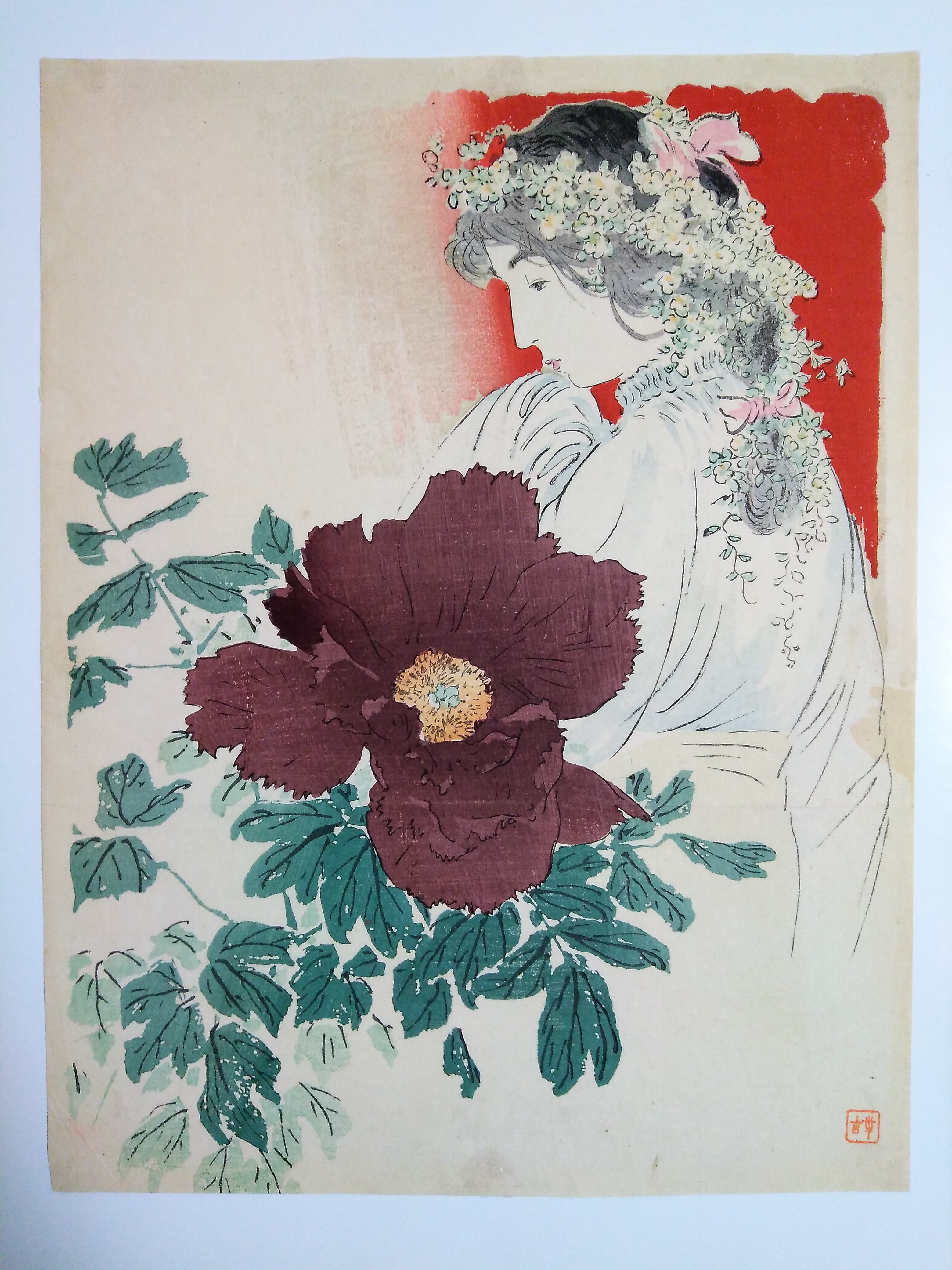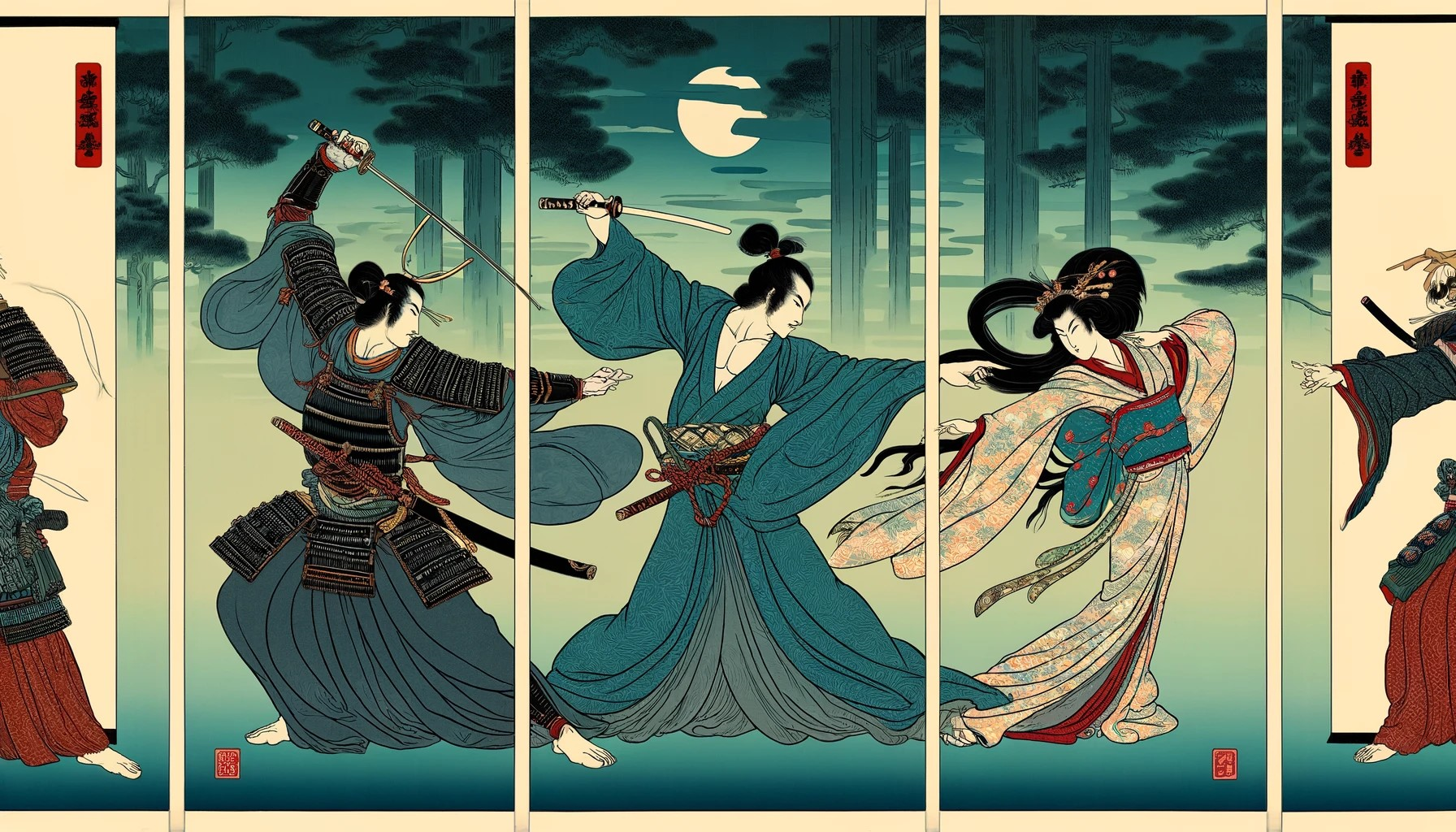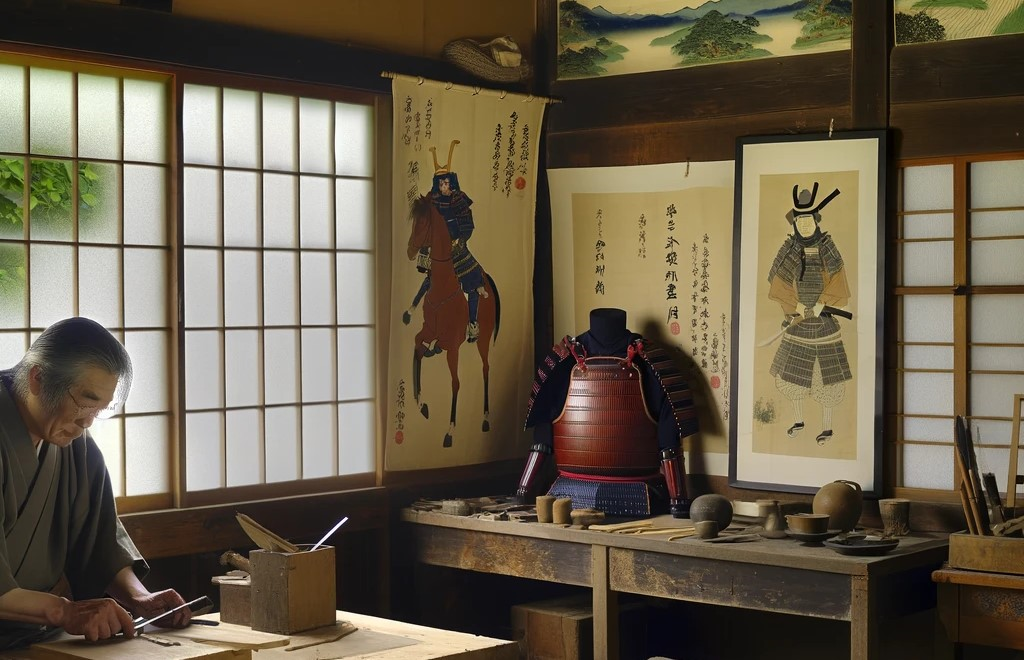Kajita Hanko (1870 ~ 1917)
Kajita Hanko (梶田半古), born in 1870 as Jojiro Kajita, was a Japanese artist known for transitioning from
classic ukiyo-e to modern Japanese prints and illustrations for widely distributed novels and magazines. The son of a renowned
metal engraver from Tōkyō, he began studying Shijō painting with Gyokuei Nabeta (玉栄鍋田), from whom he received the name "Gyokushū."
After an interruption due to an eye infection, he resumed his studies under the Nanga painter, Kenkō Ishii (研古石井).
During his career, Hanko specialized in nihon-ga (日本画, Japanese painting) and woodblock prints, but he is best known for his illustrations and
kuchi-e (口絵, frontispieces) for novels and magazines. In 1898, he became the vice-principal of the Toyama Prefectural School of Arts and Crafts in
Takaoka, but he left the position less than a year later to return to Tōkyō, where he founded a private art school and continued to work as an illustrator
for the Yomiuri Shinbun (読売新聞).
Hanko gained fame as an illustrator through his work on the novel series "Demon of Gold" between 1900 and 1901 and later with his woodblock printed and
lithographic images for the novel "Evil Wind, Love Wind" in 1902, which captured a wide audience. He died at the age of 47 from tuberculosis.
Today, his works are found in prestigious collections such as the Victoria & Albert Museum and the British Museum.

Young warrior
Bungei kurabu

Hi no dejima
Takasago
Murai Gensai

A woman with a purple peony


